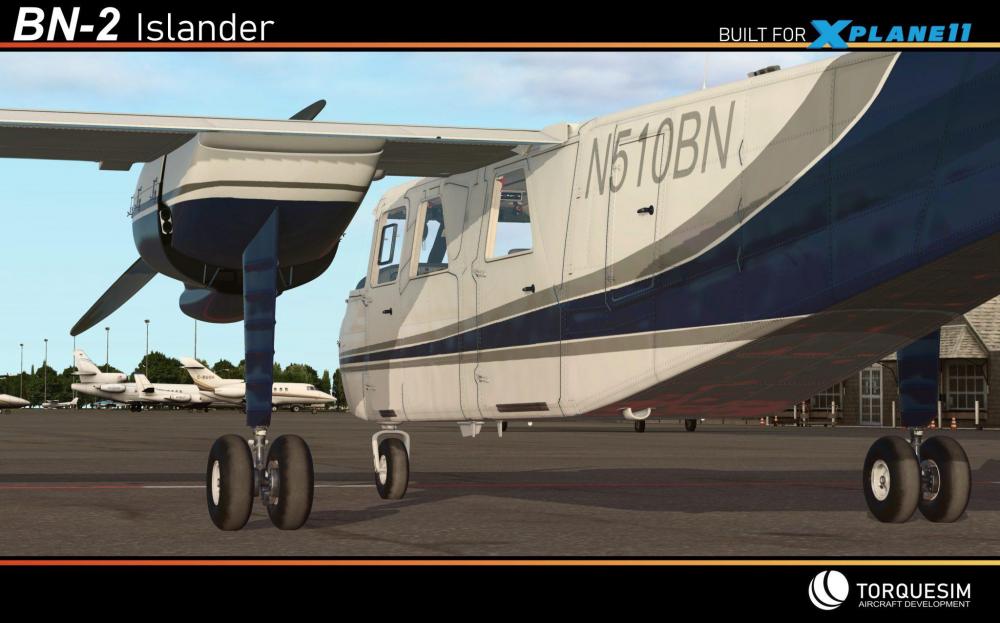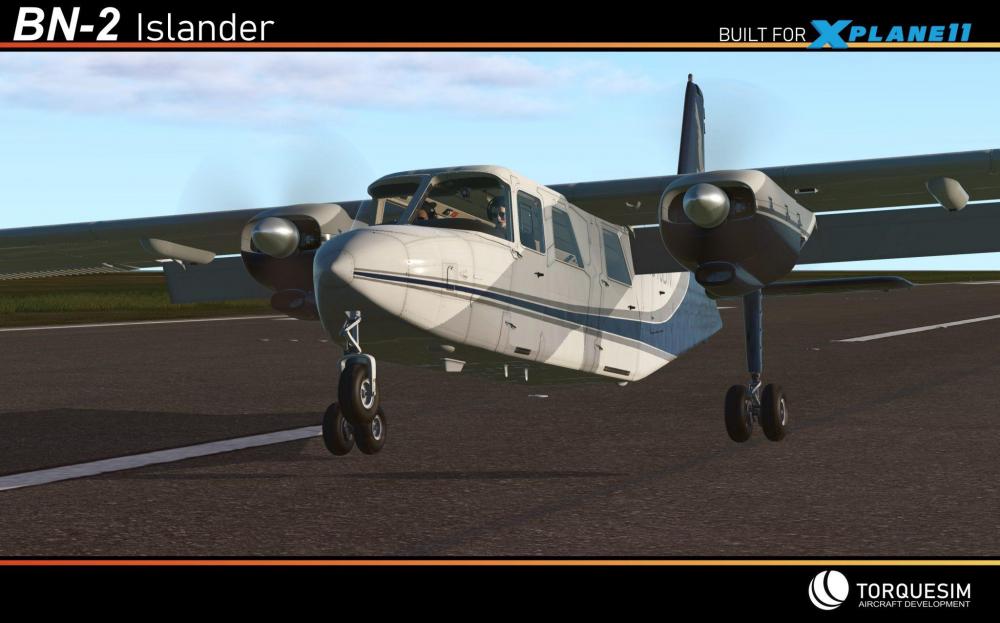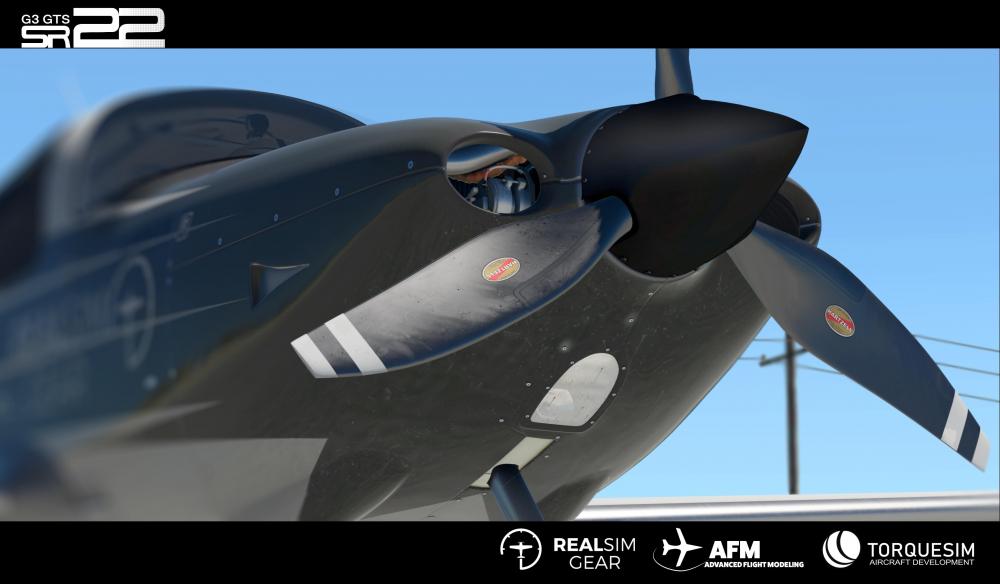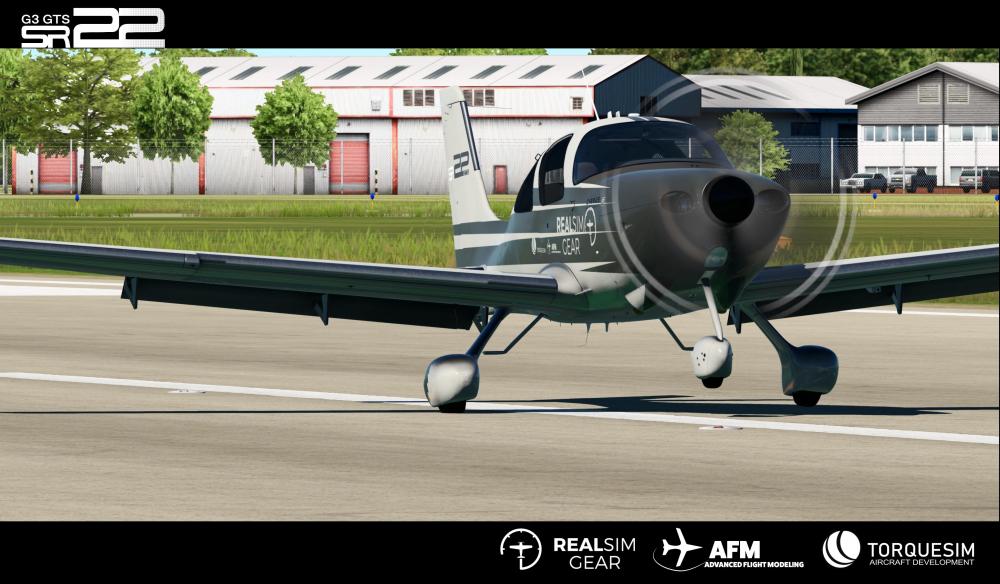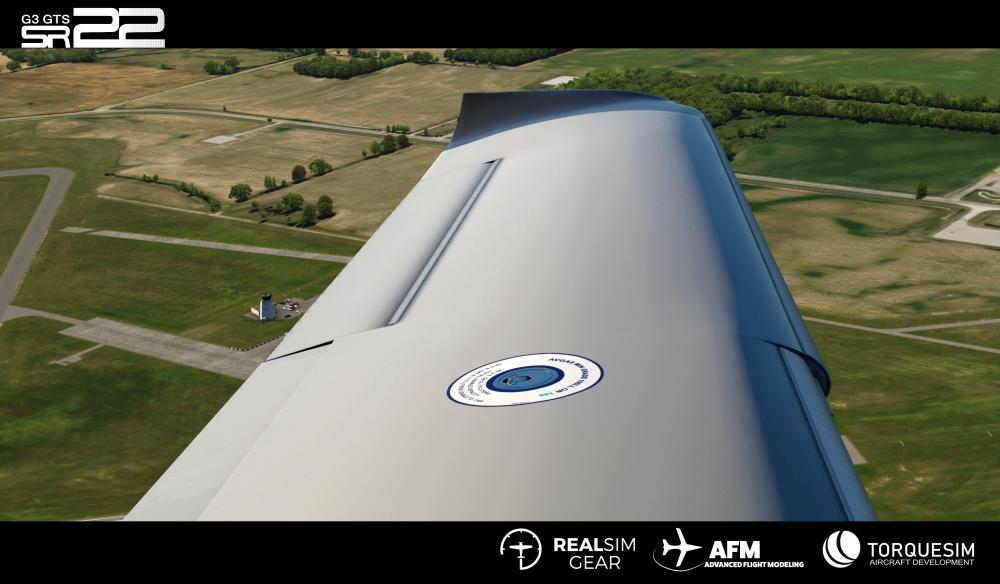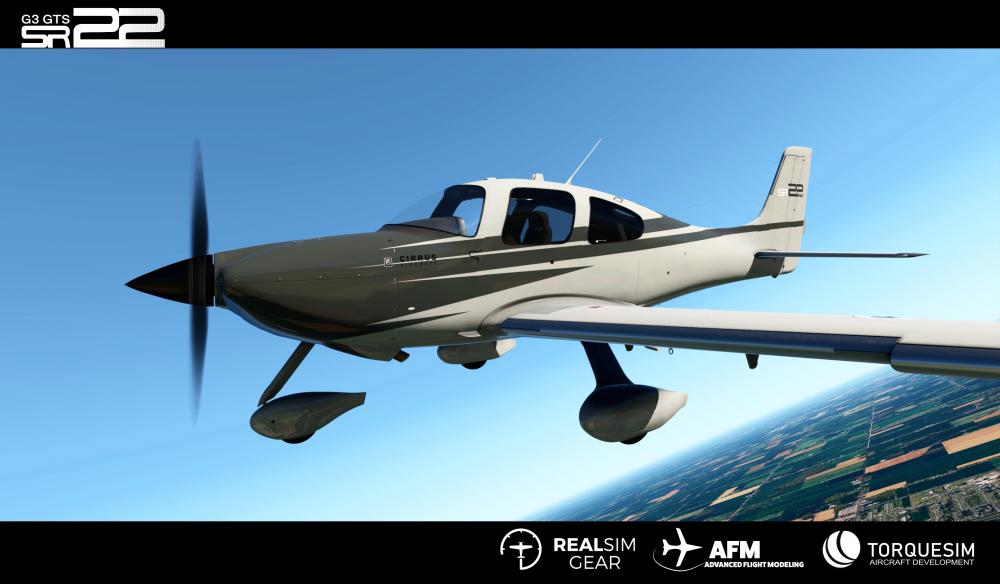Leaderboard
Popular Content
Showing content with the highest reputation on 03/23/2020 in all areas
-
TorqueSim and X-Aviation are proud to announce the BN-2 Islander! Initially started independently of TorqueSim, the inclusion of this beautiful bird into the new TS development pipeline has allowed for rapid progress and the seamless integration of custom systems, as well as boosting the quality of the 3D models and textures significantly! This aircraft will feature a high quality model, PBR textures throughout, a full custom electrical system with working circuit breakers, support for the AFM G5 avionics on launch, and of course the fantastic roar of its O-540s will be rendered in beautiful FMOD! All that, and more to come as we plan to update and improve our product throughout its lifetime! To stay up to date with what’s going on keep a close eye on the forum here! Stay tuned for more dev updates, screenshots, and insights, and of course for the big moment when the plane is available to fly on X-Aviation!2 points
-
FYI, we will create a more comprehensive set of custom commands for controls that can be mapped to "joystick settings". I will assess whether or not we can squeeze a bunch of them into the next patch. Creating them is relatively quick. If not the next patch, then perhaps shortly thereafter in a dedicated "commands additions" patch. -tkyler2 points
-
COVID-19 Status: We would like to take a moment to share our well wishes to everyone during this unprecedented COVID-19 pandemic. Currently, all members of our team are healthy, and as we work remotely already, work is progressing normally. As always, safety and health remain paramount to us. Best wishes, Steaven McKenzie and Cooper LeComp Managing Partners, TorqueSim Aircraft Development The TorqueSim Pocket Rocket is on the final day of its sale (45% off), returning to normal pricing on Sunday, March 22 at midnight eastern time. If you want a fun aircraft to add to your fleet when you are stuck at home, we’ve got you covered! And now for our update, written by Marius Bohn, a developer at TorqueSim: A fully custom engine model: Enhanced or custom engine and failure models are becoming increasingly established in flight simulation, but are usually not able to trace the characteristics, peculiarities and limits of an aviation internal combustion engine back to a well-founded model, because there is a lack of physical basis and often simple, schematic relationships are used. Unfortunately, this often leads to confusion and resentment even among real pilots, including myself. Our SR22 and SR22TN will therefore be the first aircraft to be equipped with a technology I have been working on for the past two years which is fundamentally new in X-Plane – as the aircraft nears completion, I have the honor of introducing you to the results of this work in the coming weeks, which will also cover flight model, TKS and oxygen systems, but this week we will start with the engine – the Continental IO-550-N, delivering 310 hp at 2,700 RPM. Why go beyond X-Plane’s engine model at all? X-Plane’s piston engine model is great in being generic and it provides a good approximation of all relevant performance parameters for a wide range of different engines. However, at its core it is configured by only a handful of parameters and can therefore be quite unprecise in individual cases, sometimes large discrepancies in the combinations of power parameters can be found and the power curve does not fit every concrete model. It also does not reflect the dynamics and inertia of an internal combustion engine very well, and those of turbochargers practically not at all. Based on scientific literature, I have succeeded in integrating an approach to simulate an aircraft piston engine in X-Plane, which maps the mass flows of air and fuel in each part of the engine in real time. Air enters through the air filter, flows through ducts, passes obstacles like the throttle plate, burns the fuel and leaves the engine as exhaust gas. Pressures and temperatures are calculated in each section, the system is modular and can map even complex induction systems like the one on the SR22TN. With the Tornado Alley turbo-normalizing system installed, the full performance capability of the engine model comes into play, as compressors, intercoolers, wastegate and turbines also have their places in the calculation of air flows and pressures. The output is not simply made to fit, it requires many real input parameters such as the shape of the throttle plate or ducts or a turbocharger map for the TN, all of which have been carefully researched and integrated in months of work – but everything else just falls into place, finely tuned to match the documentation of the real aircraft within a few percent across the entire normal flight envelope. We have made no compromises here! Also regarding your framerate, the architecture is heavily multithreaded and has virtually no performance impact on X-Plane. Does it have other advantages as well? The biggest advantage of this approach is the fact that the masses of air and fuel are available at hand and therefore the air-fuel ratio in each individual cylinder. So it is known at all times whether fuel is able to burn at all and how efficiently. You will notice this when priming and starting, when flooding the engine or when leaning – the EGT of the cylinder with the first peak will decrease while all others are still increasing! You will even have the possibility to turn some engine set screws which a mechanic in reality also has to adjust for example maximum fuel flow or manifold pressure target on the turbo-normalized. Inertia and dynamics are directly visible in the evolutions of fuel flow and manifold pressure when moving the power lever, especially in the TN. Turbocharger speeds are calculated and they need time to accelerate – just like the wastegate does to compensate for you advancing that power a bit to quickly on takeoff and the resulting overboost by allowing parts of the exhaust to bypass the turbine! The fuel system has been treated in the same way as the air system, from tanks to the injector nozzles. You will notice fuel sensors and strainers that are sensitive to bank. Fuel lines which take time to empty and fill, engine-driven and boost pumps with fuel pressures following real evolutions. Since the model simulates the engine down to its smallest components, it offers the optimal conditions for a very fine wear and failure system. Just imagine, on a hot day with warm fuel, to quickly climb up to the flight levels and forget about the boost pump – vapor lock will certainly be waiting for you! Or think of an induction system leakage at FL250 which makes you lose all your manifold pressure, followed by a steep descent cooling down the engine and wearing out the cylinders – but thankfully the SR22’s propeller control is connected to the throttle lever, which limits engine speed to 1,900 RPM at low power settings. There are so many more advantages to this you will still be able to discover yourself.1 point
-
GA has become quite exciting for X-Plane (e.g. TBM, Pocket Rocket, M20 update). Definitely looking forward to this release!1 point
-
In their latest posting on the Rotate website, the developers state: "After a few months of silent work, we can now show some screenshots featuring the MCDUs. Around 30 individual pages were put in the roadmap, and most of them are already operative. Some of the most relevant pages are shown here on these screenshots. We have advanced a lot in the FMCs and FCCs, continuing with the dual cockpit approach. The autopilot is now waiting for tuning. We are preparing now to address the few pages and functions that you will miss on this publication: the performance related pages which are part of our next milestone, along with aerodynamics and navigation." You may find the full posting of screenshots and information by clicking here.1 point
-
As far as I know the IXEG does not expose all the buttons and switches as commands by default, so that is why you won't find them when mapping your keyboard or joystick buttons. One solution would be to create a FlyWithLua script to create all the required commands for the overhead panel switches and buttons and then you'll be able to map them to a keyboard or joystick. But... this is not a trivial task unless you know FlyWithLua scripting and how to create custom commands. So yes, it is possible but not so straightforward.1 point
-
To help others out I'm going to include the contents of my VR Config file after tweaking: A 1100 VRCONFIG ################################ #TELEPORT HOTSPOTS ################################ BEGIN_TELEPORT_HOTSPOT SITTING Pilot's Seat AABB -0.6091 0.1329 0.9961 -0.0091 0.3329 1.5961 PRESET_XYZ -0.3091 0.7829 1.2961 PRESET_PSI 0.0000 PRESET_THE 0.0000 PRESET_PHI 0.0000 END_TELEPORT_HOTSPOT Every aircraft you use in VR should have one, though, alas, the Pocket Rocket doesn't come with this file. There are two Pocket Rocket planes - the one with retractable undercarriage and the one with fixed undercarriage. Both will need their own vrconfig files. These are standard text files that live under: ….\X-Plane 11\Aircraft\X-Aviation\Pocket Rocket For the Pocket Rocket your two vrconfig files should be named: Pocket Rocket Retract_vrconfig.txt and Pocket Rocket_vrconfig.txt Just create empty notepad files with those names and copy the above values in and save. Obviously, the above values are for my height and seating, but they will get you started in roughly the right place. To fine tune, I highly recommend downloading VR Tools: https://forums.x-plane.org/index.php?/files/file/44717-vr-tools-show-edit-text-file-show-fps-and-more-filter-commands-for-vr-edit-vr-hotspots/ This tool contains a hotspot editor where you can change and save your seating position from within X-Plane! It's very easy to use and I'd recommend viewing SparkerInVR's You-Tube video on seat configuration if you are unsure: Just need to work out how to use the ignition switch in VR - then I'm away! RobP1 point
-
Hi, I was looking for this type of aircraft for the XPlane11 yesterday and today I hear that it is coming soon. I am very pleased. Thank you very much.1 point
-
Hello all. I have not been able to get onto the FMOD sound conversions as of yet for personal reasons; however, things have transpired during the reorganization process such that we are now maintaining two development branches. A longer term branch which will use the new XP11 navdata I've written about above, with revised FMS and we'll also maintain a "now" branch which we'll use to make compatibility patches and small fixes as able until the major revision comes out. The 'now' branch is a combination of our current FMS code base, but with the new 3D development pipeline....and juxtaposing those two elements has been the focus over the last few weeks. As many have noted, this tact will allow us to not have to wait for "big ticket' items like the FMS/FMOD conversions in order to get the smaller improvements to the current product. Until we finished our "pipeline renovation" though, this wasn't as easy as it sounded. We have begun flight testing again and making tweaks to the flight model as X-Plane updates come out. In particular, we are working with the 'experimental' flight model in version 11.41+ as we feel that will become the norm. In addition, we have XP 11.5+ test builds so we can test the Vulkan and Metal graphics also. The plan now is to get a XPlane compatibility update out asap, with scroll wheel support. This patch will have small fixes for the exterior lighting/MCP issue and flight dynamics etc. After that, we'll resume our development in earnest. -tkyler1 point


